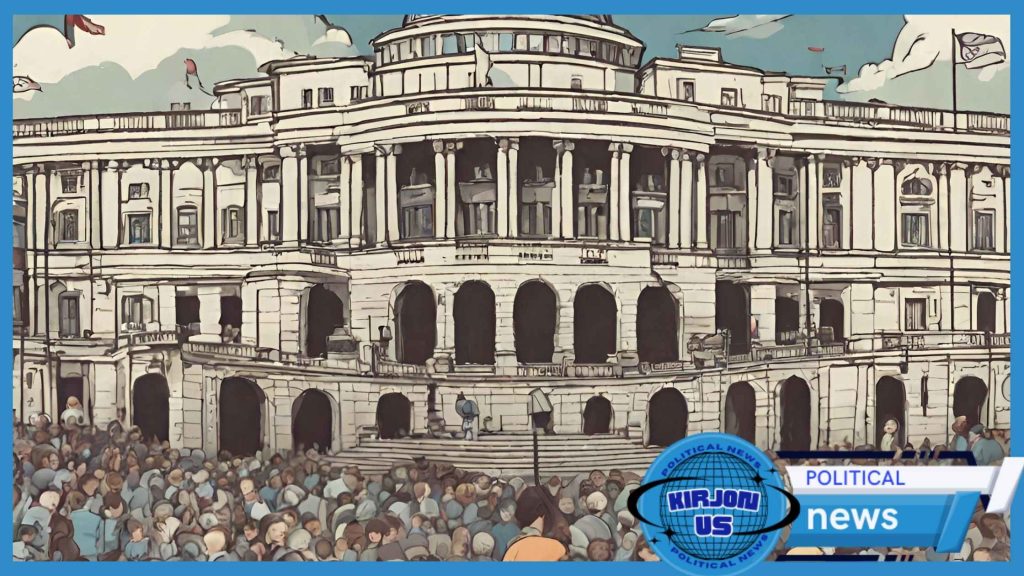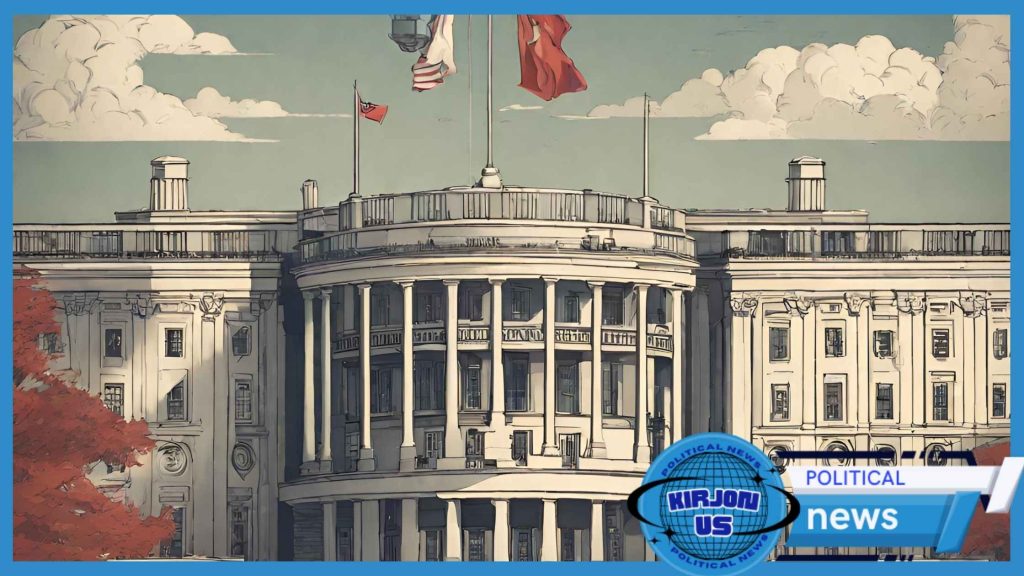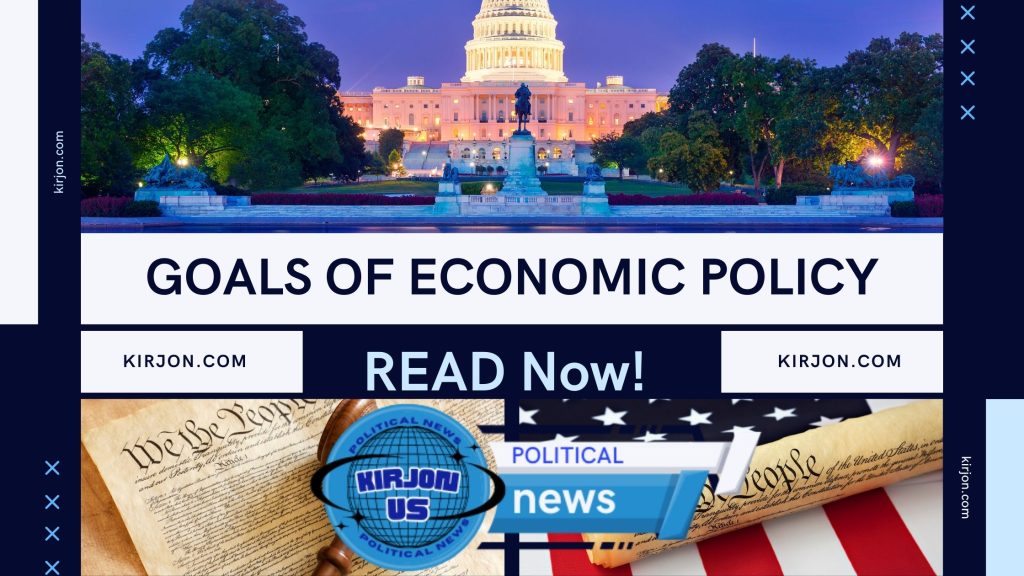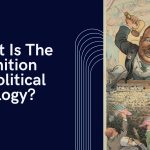Economic policy serves as the compass guiding a nation’s economic journey, influencing its trajectory and outcomes. It encompasses a diverse array of strategies, regulations, and interventions crafted by governments and central banks to steer economic activities toward desired ends. At the heart of economic policy lie four overarching goals, each representing a crucial pillar supporting the foundation of a stable and prosperous economy. These goals form the bedrock upon which policymakers base their decisions, striving to foster growth, stability, and prosperity for the populace. In this article, we delve into the intricacies of these four fundamental goals of economic policy, unraveling their significance and exploring the strategies employed to achieve them.
2. Goal 1: Economic Growth

Definition
Economic growth stands as a cornerstone of economic policy, representing the expansion of a nation’s capacity to produce goods and services over time. It embodies the overarching aim of fostering prosperity and improving living standards for the populace. At its core, economic growth signifies an increase in the real GDP (Gross Domestic Product) of a country, reflecting an expansion of its economic output beyond previous levels.
Importance
The pursuit of economic growth holds immense significance, serving as a catalyst for various positive outcomes within an economy. It facilitates job creation, as expanding industries require a larger workforce, thereby reducing unemployment rates and enhancing labor market dynamics. Additionally, economic growth fosters innovation and technological advancement, incentivizing investment in research and development to drive productivity gains and efficiency improvements.
Strategies
Achieving sustained economic growth necessitates the implementation of targeted strategies aimed at stimulating productive capacities and fostering innovation. Investment in physical capital, such as infrastructure development and technological advancements, lays the groundwork for enhanced productivity and efficiency gains. Furthermore, fostering an environment conducive to entrepreneurship and innovation through supportive policies and regulatory frameworks can spur economic dynamism and stimulate growth across various sectors. Additionally, promoting human capital development through investments in education and healthcare cultivates a skilled workforce capable of driving innovation and contributing to long-term economic growth.
3. Goal 2: Full Employment

Explanation
Full employment represents a state in which all individuals willing and able to work can find employment opportunities in the labor market. It embodies the notion of maximizing employment levels while minimizing unemployment rates, ensuring that the workforce is fully utilized to its potential. Achieving full employment is not merely about numerical targets but also encompasses considerations of quality employment, including factors such as job security, decent wages, and suitable working conditions.
Significance
Full employment holds paramount importance within the realm of economic policy due to its profound implications for societal well-being and economic stability. When the labor force is fully employed, it translates into higher levels of income distribution, reduced poverty rates, and enhanced social cohesion. Moreover, full employment fosters economic resilience by bolstering consumer confidence and aggregate demand, thereby stimulating overall economic activity and fostering sustainable growth.
Policies
To attain full employment, policymakers employ a mix of fiscal, monetary, and labor market policies aimed at bolstering job creation and reducing unemployment. Fiscal measures, such as public infrastructure projects and investment incentives, can generate employment opportunities directly while stimulating economic activity. Monetary policies, including interest rate adjustments and quantitative easing, aim to maintain macroeconomic stability and promote conducive conditions for job creation. Additionally, labor market policies encompass initiatives such as skills training programs, job placement services, and labor market regulations aimed at enhancing employability and reducing structural barriers to employment. By implementing a comprehensive approach addressing both demand and supply-side factors, policymakers endeavor to realize the goal of full employment and foster inclusive economic growth.
4. Goal 3: Price Stability

Meaning
Price stability denotes a state of equilibrium in the general price level of goods and services within an economy over time. It implies a low and stable rate of inflation, where changes in prices remain moderate and predictable, thus preserving the purchasing power of money. Price stability serves as a crucial foundation for economic stability, facilitating efficient resource allocation, fostering consumer confidence, and supporting long-term economic growth.
Impact
Achieving and maintaining price stability yields various positive outcomes for individuals, businesses, and the economy as a whole. It ensures that consumers can make purchasing decisions with confidence, knowing that the value of their money will remain relatively stable over time. Stable prices also facilitate long-term planning and investment decisions for businesses, as they can better forecast costs and revenues. Moreover, price stability mitigates the adverse effects of inflation on fixed-income earners, retirees, and individuals with limited financial resources, thereby promoting social welfare and income equality.
Measures
To uphold price stability, policymakers employ a range of monetary and fiscal measures aimed at managing inflationary pressures and anchoring inflation expectations. These measures may include:
- Monetary Policy: Central banks utilize monetary policy tools, such as interest rate adjustments, open market operations, and reserve requirements, to influence the money supply and manage inflationary pressures.
- Inflation Targeting: Many central banks adopt explicit inflation targets as a guiding framework for monetary policy, aiming to achieve a predetermined inflation rate over the medium term.
- Price Controls: In certain instances, governments may implement price controls or regulations to prevent excessive price fluctuations in essential goods and services, thereby safeguarding consumer welfare.
- Supply-side Policies: Policies aimed at enhancing productivity, promoting competition, and reducing bottlenecks in production and distribution channels can help alleviate supply constraints and mitigate upward pressure on prices.
By implementing a combination of these measures, policymakers endeavor to maintain price stability, thereby fostering economic certainty, enhancing consumer welfare, and supporting sustainable economic growth.
Goal 4: External Balance

Understanding
External balance refers to the equilibrium in a nation’s international trade and financial transactions, ensuring that its external accounts remain sustainable over time. It encompasses the balance of trade in goods and services, as well as the balance of payments, which includes capital flows, investment income, and transfers. Achieving external balance is crucial for maintaining macroeconomic stability and safeguarding a country’s financial resilience in the global arena.
Relevance
External balance holds significant relevance for economic policymakers, as imbalances in external accounts can pose risks to a nation’s economic stability and growth prospects. Persistent trade deficits or surpluses may indicate underlying weaknesses or vulnerabilities in the economy, such as overreliance on foreign borrowing or inadequate competitiveness in global markets. Moreover, sustained imbalances can exert pressure on exchange rates, leading to currency fluctuations and potential disruptions to international trade and investment flows.
Actions
To promote external balance, policymakers implement a range of measures aimed at addressing underlying imbalances and fostering sustainable international economic relations. These actions may include:
- Exchange Rate Policies: Central banks may intervene in foreign exchange markets to stabilize exchange rates and prevent excessive currency fluctuations that could disrupt trade flows.
- Trade Policies: Governments may pursue trade policies aimed at enhancing export competitiveness, reducing trade barriers, and fostering diversification of export markets to improve the balance of trade.
- Capital Controls: In certain instances, policymakers may implement capital controls or prudential measures to manage capital flows and prevent excessive volatility in financial markets, thereby safeguarding external stability.
- International Cooperation: Collaboration with international organizations and other countries can facilitate coordinated efforts to address global imbalances and promote multilateral trade and investment agreements.
By adopting a multifaceted approach addressing both demand and supply-side factors, policymakers aim to foster external balance, thereby enhancing economic resilience and promoting sustainable growth in an interconnected global economy.
What are the Three Tools of Economic Policy?

Monetary policy refers to the use of various instruments by a country’s central bank to regulate the money supply, interest rates, and credit conditions in the economy. It aims to achieve macroeconomic objectives such as price stability, full employment, and sustainable economic growth.
Tools of Monetary Policy
- Interest Rates: Central banks adjust interest rates to influence borrowing and lending behavior, thereby affecting consumption, investment, and overall economic activity.
- Open Market Operations: Central banks buy or sell government securities in the open market to control the money supply and influence interest rates.
- Reserve Requirements: Central banks mandate the amount of reserves that banks must hold, affecting their ability to lend and the overall money supply.
Definition
Fiscal policy involves the use of government spending, taxation, and borrowing to influence aggregate demand and stabilize the economy. It aims to achieve macroeconomic objectives such as economic growth, full employment, and price stability.
Tools of Fiscal Policy
- Government Spending: Increasing or decreasing government spending on goods and services can directly stimulate or restrain economic activity.
- Taxation: Adjusting tax rates and policies can affect disposable income, consumption, and investment decisions.
- Government Borrowing: Governments may borrow or repay debt to finance spending or reduce budget deficits, impacting interest rates and overall economic activity.
Definition
Supply-side policies focus on improving the productive capacity and efficiency of the economy, aiming to stimulate long-term economic growth and reduce inflationary pressures. These policies often target factors such as labor market flexibility, investment incentives, and regulatory reforms.
Tools of Supply-Side Policies
- Labor Market Reforms: Measures to enhance labor market flexibility, promote skill development, and reduce regulatory barriers can boost employment and productivity.
- Investment Incentives: Tax breaks, subsidies, and infrastructure investments encourage private sector investment in capital goods, technology, and innovation.
- Regulatory Reforms: Streamlining regulations, reducing bureaucratic red tape, and promoting competition can enhance efficiency and stimulate entrepreneurship and investment.
Conclusion
In conclusion, economic policy plays a pivotal role in shaping the trajectory of a nation’s economy, guiding it towards stability, growth, and prosperity. The four primary goals of economic policy—economic growth, full employment, price stability, and external balance—form the cornerstones of policymaking, guiding decision-makers in their quest to achieve optimal economic outcomes. Economic growth fosters prosperity and innovation, full employment ensures social welfare and economic resilience, price stability maintains purchasing power and certainty, and external balance safeguards against global economic risks.
By employing a mix of monetary, fiscal, and supply-side policies, governments endeavor to strike a delicate balance between these objectives, navigating the complexities of domestic and international economic landscapes. However, the pursuit of these goals is not without challenges, as policymakers must contend with trade-offs, uncertainties, and external shocks that can influence policy outcomes.
In the face of evolving economic dynamics and global interdependencies, policymakers must remain vigilant, adaptive, and collaborative in their approach to economic policymaking. By embracing evidence-based strategies, fostering innovation, and prioritizing inclusive growth, nations can chart a course towards sustainable development and shared prosperity for all.
FAQs
Q1: What is the role of economic policy in promoting economic stability?
Economic policy aims to promote economic stability by addressing imbalances, mitigating risks, and fostering resilience in the face of external shocks. Through measures such as monetary and fiscal policy, governments seek to stabilize output, employment, and prices, ensuring sustainable growth and mitigating the impact of economic fluctuations.
Q2: How do monetary and fiscal policies differ in their objectives and tools?
Monetary policy primarily focuses on regulating the money supply and interest rates to achieve macroeconomic objectives such as price stability and full employment. Fiscal policy, on the other hand, involves government spending, taxation, and borrowing to influence aggregate demand and stabilize the economy. While monetary policy is typically implemented by central banks, fiscal policy is the domain of government authorities.
Q3: Why is price stability important for economic performance?
Price stability is crucial for economic performance as it preserves the purchasing power of money, fosters confidence and predictability, and supports sustainable economic growth. By maintaining stable prices, policymakers can mitigate inflationary pressures, reduce uncertainty, and promote efficient resource allocation in the economy.
Q4: How do supply-side policies contribute to long-term economic growth?
Supply-side policies focus on enhancing the productive capacity and efficiency of the economy, thereby stimulating long-term economic growth. By promoting investment, innovation, and entrepreneurship, supply-side policies seek to remove barriers to growth, boost productivity, and foster competitiveness in global markets.
Q5: What challenges do policymakers face in pursuing the goals of economic policy?
Policymakers face various challenges in pursuing the goals of economic policy, including trade-offs between objectives, uncertainties in economic forecasting, and external shocks such as global economic downturns or geopolitical tensions. Additionally, ideological differences, institutional constraints, and political considerations can complicate the policymaking process, requiring careful navigation and consensus-building.







